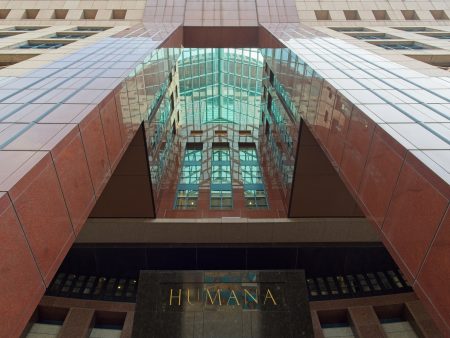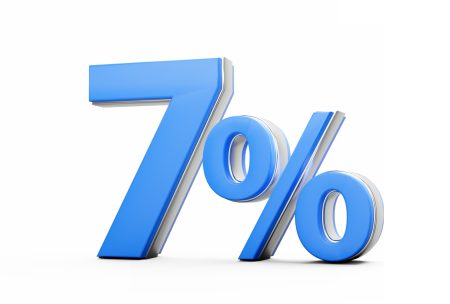Dear co-investor:
We closed the first half of 2025 with a total volume of EUR 2.894 billion AUM and EUR 22 million of net capital inflows. Nearly 1,100 new co-investors have joined Azvalor during this period, bringing the total to over 28,100.
Equities are, without a doubt, the best place to save long-term and increase our purchasing power by earning more than prices rise. However, not everyone invests as much as they should due to the fear of the—sometimes very sharp—declines that almost always occur every so often. Those who are able to avoid the temptation to sell their equity assets in a decline are, therefore, those who make the most money in the long term.
Today, anyone can access equities by purchasing an index with low fees. At Azvalor, we try to improve the results of this index, and historically, we’ve succeeded. To do so, we’ve had to go against the tide and, on an aggregate basis, get it right more often than not. Swimming against the tide, however, is difficult, because it requires spending a lot of time in “ant” mode, watching the cicadas sing. When winter arrives, however, everything returns to normal, and usually, all of a sudden and in a very short time. A recent example: in 2022, the cicadas (the SP500 index) lost more than 20%, while the Azvalor ants gained 45%. In one year, all previous efforts were compensated, and, as Warren Buffett said, when the tide goes out… “we saw who was swimming naked”.
The current moment reminds us of the run-up to 2022. The cicadas sing and dance and win, while we ants prepare for winter with discipline, humility and our usual process. Let’s see why we say this:
The cicadas sing and dance…
- The market value of the 7 largest tech companies (USD 18.6 trillion) exceeds the value of the Chinese, British and Brazilian stock markets combined!
- Meme cryptocurrencies are now worth nearly USD 80 billion.
- The value of all stock markets is at 117% of GDP. Other previous peaks (100% in 2007, 110% in 2000, and 65% in 1929) were followed by declines of more than 50%.
- The value of the American stock market, at 210% of GDP, is at the highest level since 1970.
However, not everything is expensive. Large growth companies (measured by the MSCI ACWI Large Cap Growth Index) are worth 32 times their earnings, while small value companies (measured by the MSCI ACWI Small Cap Value Index) are worth 13.9 times, less than half!
And it is there, among the forgotten, that we ants prepare our pantry for winter. Or rather, among the—in our opinion—mistakenly forgotten.
For example, coal remains in the West a “shunned” commodity by politicians, the media and investors. Coal mining companies are trading at multiples as if they were about to disappear soon. However, coal accounts for almost 30% of the world’s primary energy needs and has continued to grow at a rate of 1.2% over the last 10 years (2024 being the new high). Despite continued declines in North America and Europe, consumption in Asia continues to grow at 2% and accounts for almost 50% of total primary energy in that part of the world.
Another example is oil; another raw material perceived as being on the verge of extinction due to the arrival of the electric car and electrification in general. Thus, many Western oil companies have reduced investment, bringing reserves to unprecedented lows (<10 years of annual production). The weight of oil in stock market indices is at 3% (historic lows), well below the highs of almost 14% in 2008, or the 30-year average of 7.5%.
We go against all of this, and our view can be summed up as follows: Nothing could be further from the truth!
In the last two years, oil consumption has grown in absolute terms (measured in energy equivalent volume) more than that of renewable energy. And if we add natural gas, the growth has been double. The penetration of oil consumption in emerging countries is still a fraction of that in advanced countries: from just over 1 barrel per person/year in India, or 4 in China, to 15-22 in Europe or the US. Oil accounts for almost 34% of the world’s primary energy needs (59% if we include gas), and it is the basis for much more than fuels for transportation, heating and electricity: oil is essential for the chemical, fertiliser, detergent and textile industries, and it is found in countless consumer products.
There are many more examples of forgotten areas, beyond raw materials, where we ants can accumulate good, cheap assets for the winter.
For example, emerging markets. The Brazilian stock market is complicated, but with a currency that has fallen 75% since 2011 and stock indices with valuations below Covid levels, we find some interesting opportunities. The situation reminds us of the investments we made in 2021 at the lows of the Argentine market, with average returns of 150% on our investments in Central Puerto, Loma Negra and Transportadora de Gas del Sur.
Another example is small companies in the UK, which have been experiencing several years of declines. The FTSE SmallCap Index remains below the levels reached almost five years ago, and today companies are trading at multiples, clearly below historical levels and at a record discount relative to the indices, especially when compared to the American index.
As you can see, there are some fishing grounds to catch outside of what’s fashionable, but deciding where to cast your nets is just the beginning. If it were as easy as just buying from the forgotten sectors, you could simply buy an ETF for each of them, and the job would be done. However, today more than ever, we must be very careful with the executives at the helm of companies, as many of them do not defend the interests of shareholders but rather their own (explaining this would require more space than we have here). Therefore, it’s not enough to choose a forgotten sector; we must take the surgeon’s knife and select only strong companies with unique market positions and an honest management aligned with shareholders.
This process (choosing where and when to contradict the market, and using the means to get it right against the consensus) is what we call the Azvalor Method, and its application by our team of 10 analysts has resulted in the portfolio we have today. A portfolio that we believe will allow us to get through the coming winters while increasing the purchasing power of its holders. The key is to go against the tide, but also to get it right. We echo Howard Marks in his memo from last April: “’When the Time Comes to Buy, You Won’t Want To’. The negative developments that make for the greatest price declines are terrifying, and they discourage buying. But, when unfavorable developments are raining down, that’s often the best time to step up”.
Let’s now look at the portfolios in detail.
Azvalor Iberia
Azvalor Iberia’s net asset value has increased by +24.1% in the first half of 2025 to EUR 184.9 million, generating a +85% cumulative return since its launch.
The portfolio is concentrated in a few companies (the top 10 accounts for nearly two-thirds of the total) that we know very well, almost all of which we have followed closely for decades and, therefore, the competitive position, management quality and valuation of which we are even more confident about.
We are convinced of the portfolio’s positive future performance and that it will “live up” to its potential, which we estimate at +52%.[1]
Azvalor Internacional
The net asset value of Azvalor Internacional FI has decreased by -1.7% from 31 December 2024, to 30 June 2025, to EUR 231.1 million, and has generated a +131% cumulative return. Today, the international portfolio is clearly more attractive than usual.
We have several global leaders trading at valuations that are inappropriate for companies of such quality and with such competitive positions. They are doing so for short-term reasons, and we have many other regional leaders in the same circumstances. There are companies with essential assets, others with assets that are impossible to replicate—even with unlimited capital—, and others that are privileged, as they are the lowest-cost producers in their class. All of them are trading at attractive prices due to the pessimism regarding their short-term performance. The vast majority of these companies have solid balance sheets, prepared for any macroeconomic or sectoral context, with only a few specific exceptions that—overall —have very limited weight and are selected for their particular appeal. They are also, for the most part, shareholder-first companies, something we are finding increasingly rare.
The value of our portfolio is slightly more than double the net asset value (+108% potential). If the past is the prologue, with this potential, we should achieve double-digit annualised returns in the coming years.
Azvalor International Sicav Luxembourg
Azvalor International SICAV Lux, available for international investors, has a similar strategy as the rest of Azvalor investment vehicles. In this regard, the portfolio invests in companies present in our fund Azvalor Internacional—our International equities fund domiciled in Spain—and it selects the best ideas from Azvalor Iberia—our Iberian equity fund domiciled in Spain.
The fund trades at an average FCF yield of 13% and a weighted average ROCE of 21%. The upside of this investment vehicle at the end of the first half of the year is +105%.
The main positions added throughout the period are Schlumberger (SLB) and Sprott Physical Uranium Trust (OTCPK:SRUUF). On the other hand, we sold Tenaris (TS) and Catalana Occ (OTC:GCNJF) among others. Regarding performance contribution, Barrick Mining (B) was the top performer during the first half of the year.
Azvalor Managers
Azvalor Managers’ return was flat in the first half of 2025, and since its launch—a little over six years ago—, it has generated a +71% cumulative return.
During the past few quarters, the fund has built a significant position in Japan through a specialised Manager—a position that currently accounts for around 4% of the portfolio. Furthermore, at the beginning of the year, a new Manager in China was fully incorporated to the fund, joining another Manager also specialised in Chinese stocks who was added in early 2024. Overall, the fund has around 30% exposure to emerging markets (including China) and around 73% in small- and mid-cap companies. It is trading at 10 times earnings, which represents a roughly 50% discount to the global stock market.
We continue to see market interest in our companies, and after six takeover bids received in 2024, we have also received several acquisition offers during this first half of the year. In total, we got nearly 30 offers over the last five years, a fact we believe is representative of the quality and undervaluation of the companies in our portfolio.
The fund has more than EUR 126 million under management and more than 1,750 investors, has a 5-star Morningstar rating and recently received a + Rating from Citywire.
News at Azvalor
Within the sphere of operational security, Azvalor has become the first entity in Europe to obtain a certification, issued by Bureau Veritas, for compliance with DORA (Digital Operational Resilience Act: the European regulation on the digital operational resilience of the financial sector). Obtaining this certification—which joins the ISO 27001 certification already received a few months ago—represents formal and external recognition that our operating platform and our information security management system comply with the highest and most demanding international standards.
In line with our commitment to disseminating financial education and promoting savings and investment among young people, Azvalor, together with the Spanish Institute of Analysts and the IEB (Institute for Market Studies), has sponsored again Value Challenge (a leading financial competition in Spain, which tests the value investing knowledge of young analysts and investors).
In the field of social action, we would like to highlight that Azvalor has signed a collaboration agreement with España Rumbo al Sur, a pioneering youth training programme, with the aim of fostering shared values, such as hard work, the pursuit of excellence, entrepreneurship and long-term vision; all necessary hallmarks for achieving good results in any area of life.
Final Considerations
We share with enthusiasm, but also with humility and a commitment to continuous improvement, the news that Azvalor was recognised, last May, for the third consecutive year, as the Best Independent National Asset Manager at the 2024 Expansión-Allfunds Awards (see news). This new accolade encourages us to reaffirm our commitment to generating long-term value for our stakeholders, as we have been doing since the firm’s founding. We understand that this recognition rewards a track record, a team and a management model, rather than the specific results of a period, and this motivates us to continue moving forward along the same path that has brought us here: the combination of an investment philosophy and a corporate culture based on highly-trained investment teams, hard work, excellence in all areas and meritocracy.
We bid farewell, thanking you once again for your trust and inviting you to contact our Investor Relations team should you require any additional information regarding any of the topics discussed, or any other of interest.
Sincerely,
Azvalor Asset Management SGIIC, S.A. Team
[1] The revaluation potentials indicated throughout this document have been obtained as a result of the difference between the estimated value of each of the portfolios’ underlying assets, based on our internal valuation models, and the prices at which each of them is currently trading on the stock markets.
Original Post
Editor’s Note: The summary bullets for this article were chosen by Seeking Alpha editors.
Editor’s Note: This article discusses one or more securities that do not trade on a major U.S. exchange. Please be aware of the risks associated with these stocks.
Read the full article here












